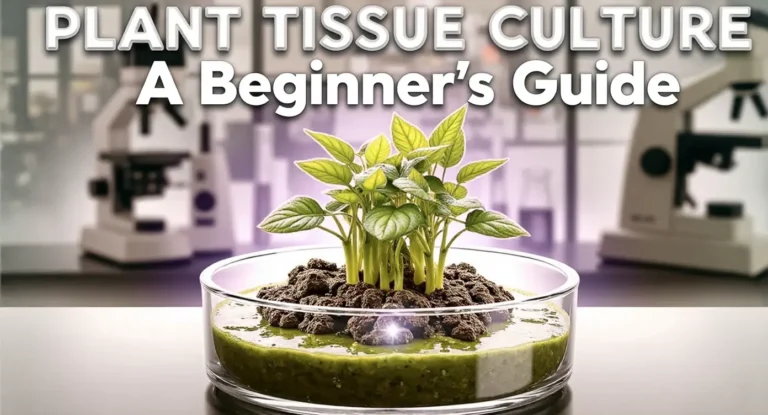Plant tissue culture is a vital biotechnological technique that revolutionizes modern agriculture, horticulture, conservation, and the development of plant-based pharmaceuticals. It involves the in vitro cultivation of plant cells, tissues, or organs under sterile, nutrient-rich, and controlled environmental conditions. This method enables rapid plant propagation, disease-free plant production, and the preservation of rare or endangered species.
One of the most critical components of successful tissue culture is the culture medium, a tailored solution containing all essential nutrients, hormones, and supplements required for plant growth and development.
What is Plant Tissue Culture?
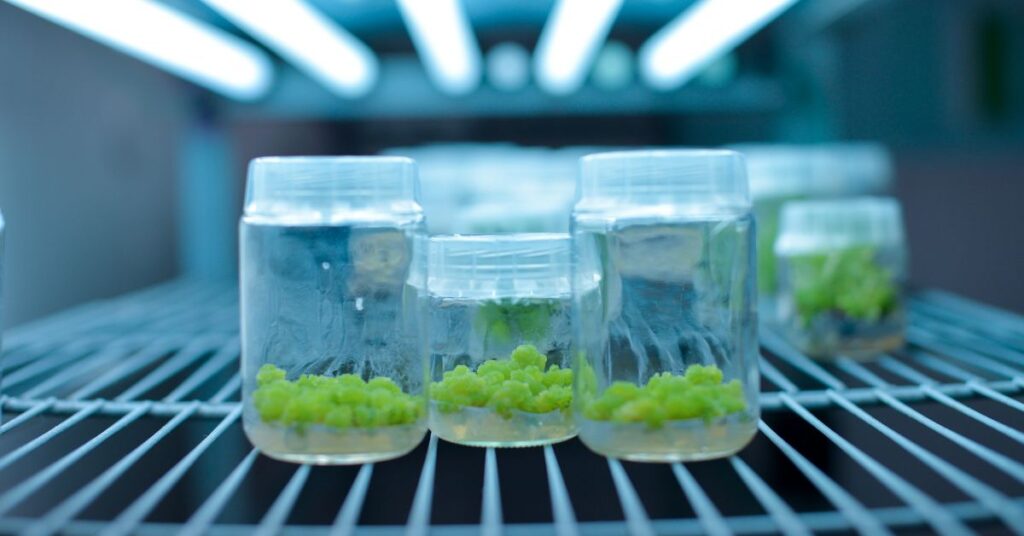
Plant tissue culture refers to the aseptic culture of plant parts (explants) like leaves, roots, stems, or meristems on a nutrient medium. The primary goal is to regenerate whole plants from a small tissue sample. Applications include:
- Micropropagation
- Genetic transformation
- Conservation of endangered species
- Secondary metabolite production
- Callus induction for research or pharmaceuticals
Types of Plant Tissue Culture Media: Explained in Detail
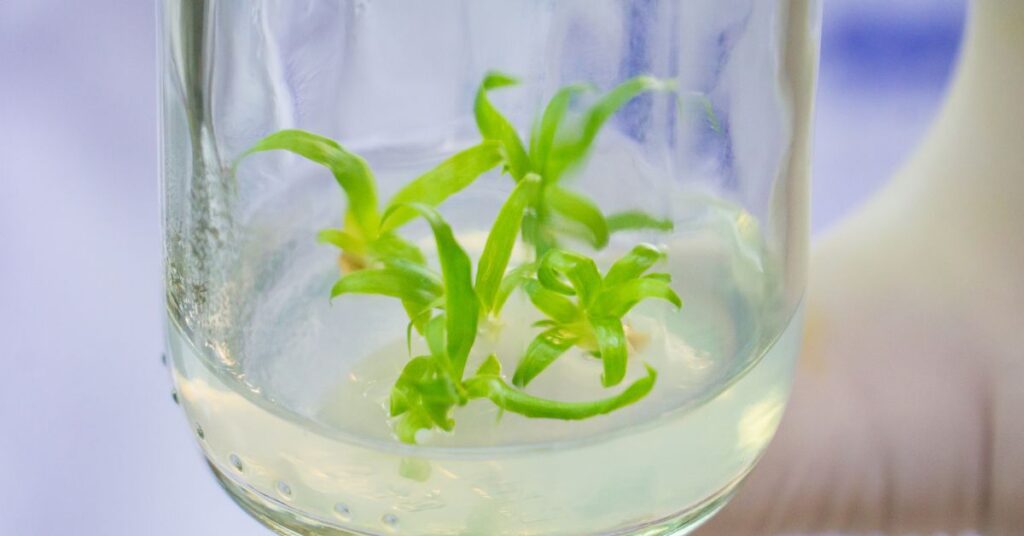
Plant tissue culture media are specially formulated nutrient mixtures that support the growth of plant tissues under sterile, in vitro conditions. The choice of medium significantly affects the success of micropropagation, callus induction, and regeneration. Over time, several media formulations have been developed to meet the needs of various plant species and propagation goals.
Below is a breakdown of the most commonly used types of media, their composition, and specific applications:
1. Murashige and Skoog (MS) Medium
Developed by: Murashige & Skoog, 1962
Use Case: Universal medium; ideal for a wide range of plant species
Key Features:
- High concentration of macronutrients (especially nitrogen in the form of ammonium and nitrate)
- Enriched with micronutrients, vitamins, and a carbon source (usually sucrose)
- Supports vigorous shoot and callus formation
Applications:
- Shoot proliferation
- Callus induction
- Micropropagation of both monocots and dicots
Example: Used extensively for crops like tomato, banana, potato, rose, and fenugreek.
2. Nitsch and Nitsch (NN) Medium
Developed by: J.P. Nitsch & C. Nitsch
Use Case: Specially designed for reproductive organ culture
Key Features:
- Lower salt concentrations than MS medium
- Optimized for gametophytic development
Applications:
- Pollen (anther) culture
- Ovule and embryo culture
- Production of haploid and doubled haploid plants used in plant breeding
Example: Widely used for Datura, barley, and rice breeding programs.
3. Gamborg’s B5 Medium
Developed by: Gamborg et al., 1968
Use Case: Ideal for cell suspension and root culture
Key Features:
- Moderate levels of macronutrients
- Unique vitamin mix (thiamine, nicotinic acid, pyridoxine)
- Lower salt strength than MS
Applications:
- Cultivation of legumes, such as soybean and alfalfa
- Callus cultures and cell suspensions
Example: Frequently used for genetic transformation experiments and plant physiology studies.
4. Woody Plant Medium (WPM)
Developed by: Lloyd and McCown, 1980
Use Case: Optimized for woody tree and shrub species
Key Features:
- Lower nitrogen content than MS to reduce toxicity
- Balanced nutrient profile suitable for slow-growing, hard-to-culture species
Applications:
- Micropropagation of hardwood trees, fruit trees, and shrubs
- Suitable for apple, pear, walnut, grapevine, and Populus spp.
Example: Used in forestry and conservation of rare tree species.
5. Driver and Kuniyuki Walnut (DKW) Medium
Developed by: Driver & Kuniyuki
Use Case: Specially formulated for nut-bearing and woody plants
Key Features:
- Balanced ammonium:nitrate ratio to minimize ammonium toxicity
- Rich in sulfates and calcium
Applications:
- Effective for walnuts (Juglans spp.)
- Micropropagation of difficult-to-culture woody plants
Example: Applied in walnut breeding and conservation programs.
6. Modified MS Media (½ MS, MMS, etc.)
Use Case: For delicate or slow-growing plant species
Key Features:
- Reduced salt concentrations (half-strength or modified)
- Minimized ammonium content to reduce stress
Applications:
- Culture of orchids, ferns, and tissue-sensitive species
- Useful in the rooting and hardening stages
Example: Widely used for Phalaenopsis orchids and woody ornamentals during root development.
Comparison Table: Plant Tissue Culture Media at a Glance
| Medium | Salt Strength | Ideal For | Notes |
|---|---|---|---|
| MS | High | Most species, general use | Rich in nitrogen |
| NN | Low | Pollen & embryo culture | Produces haploids |
| B5 | Moderate | Root cultures & legumes | Unique vitamin blend |
| WPM | Low | Woody plants & shrubs | Suitable for slow-growers |
| DKW | Balanced | Nut-bearing trees | High sulfate content |
| ½ MS / MMS | Low/Modified | Orchids, sensitive plants | Less ammonium toxicity |
Pro Tip:
No single medium fits all. Often, researchers must experiment with base media and supplement them with specific hormones (PGRs) like auxins or cytokinins based on the plant type and propagation stage.
Key Components of Tissue Culture Media
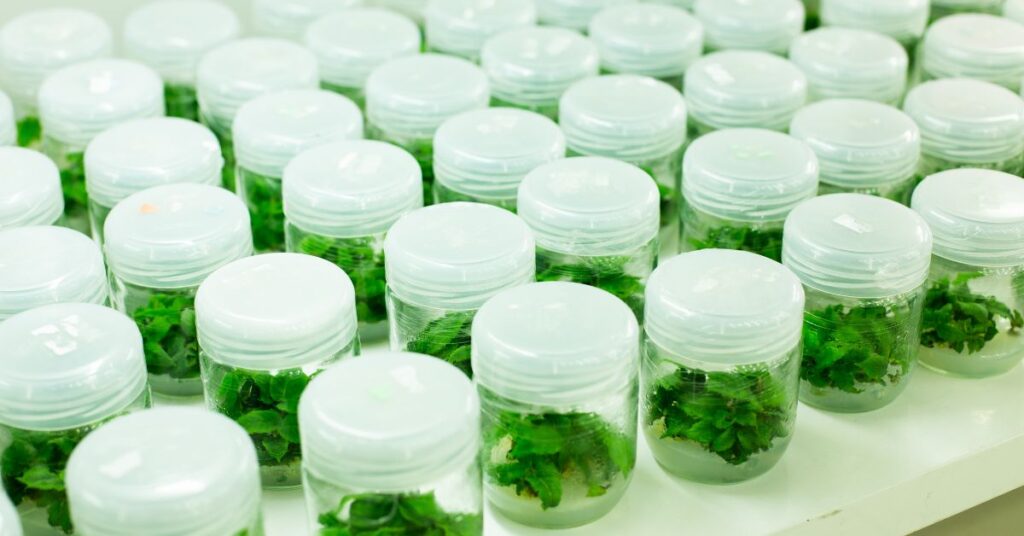
Macronutrients & Micronutrients
- Macronutrients: N, P, K, Ca, Mg, S
- Micronutrients: Fe, Mn, Zn, B, Cu, Mo
- Iron is typically supplied as Fe-EDTA to avoid precipitation
Carbon Source
- Usually sucrose (2–4%) acts as an energy source.
Vitamins & Amino Acids
- Vitamins like thiamine (B1), pyridoxine (B6), and nicotinic acid (B3)
- Amino acids like glycine improve cell metabolism
Solidifying Agent
- Agar (0.8–1%) or alternatives like gelrite for semi-solid media
Plant Growth Regulators (PGRs)
PGRs are vital for manipulating plant growth and differentiation. The two most important classes are auxins and cytokinins, often used in various combinations.
| Growth Regulator | Function |
|---|---|
| Auxins (IAA, IBA, NAA, 2,4-D) | Root induction, callus formation |
| Cytokinins (BAP, Kinetin, Zeatin, TDZ) | Shoot proliferation, delay senescence |
| Gibberellins (GA3) | Seed germination, stem elongation |
| Abscisic Acid (ABA) | Stress regulation, somatic embryogenesis |
| Brassinosteroids | Enhance growth & stress resistance |
The auxin:cytokinin ratio determines whether roots or shoots develop:
- High auxin + low cytokinin → roots
- High cytokinin + low auxin → shoots
- Equal ratio → callus
Selection of Culture Media: 5-Step Approach
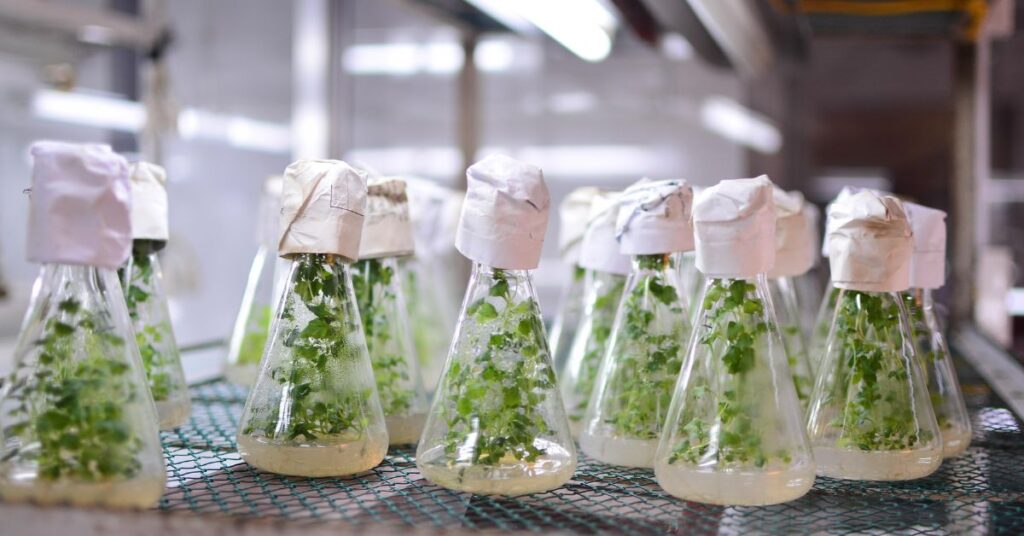
According to Plant Cell Technology, selecting the right culture medium involves:
- Define Culture Objective: Callus induction, shoot multiplication, root development, etc.
- Understand Plant Species Requirements: Use existing protocols or test known responsive media.
- Select Base Medium: MS, B5, NN, WPM, etc., depending on plant type.
- Supplement with Proper PGRs: Based on the growth phase.
- Adjust pH (typically 5.7–5.8) and test sterility & clarity before use.
Callus Induction and Its Applications
Callus is a mass of unorganized cells formed on explants when exposed to specific auxin-cytokinin combinations. It is essential for:
- Plant regeneration
- Genetic transformation
- Production of secondary metabolites (e.g., Taxol, alkaloids)
- Biopharmaceuticals and cosmetics
- Environmental applications (phytoremediation)
Broader Applications of Tissue Culture
- Agriculture: Mass production of elite, high-yielding, disease-free crops.
- Pharmaceuticals: Callus-derived bioactives like flavonoids, phenolics.
- Nutraceuticals: Enhanced antioxidant profiles in functional foods.
- Restoration Ecology: Propagation of endangered or native flora.
Conclusion
Plant tissue culture is a transformative tool in biotechnology. Its success hinges on the optimization of culture media and practices, especially the precise balance of nutrients and growth regulators. As protocols evolve and become more species-specific, the scope of plant tissue culture continues to expand—from conserving biodiversity to producing next-generation crops and therapeutic compounds.
Whether you’re a researcher, commercial grower, or student, understanding the components and rationale behind culture media is key to unlocking the full potential of this powerful technique.
Also read- World of Plant Tissue Culture: A Beginner’s Guide
FAQs
What is plant tissue culture media?
Plant tissue culture media is a nutrient-rich mixture containing minerals, vitamins, and plant hormones used to grow plant tissues in vitro.
What are the types of culture media in plant tissue culture?
Common types include MS, B5, NN, WPM, and DKW media—each optimized for different plant species or purposes.
What is the most commonly used medium?
Murashige and Skoog (MS) medium is the most widely used due to its high nutrient content suitable for a wide range of plants.
How do I select the right medium for tissue culture?
You should consider your plant species, cultivation goal (shoot/root/callus), and test different hormone combinations.
What is the role of auxins and cytokinins in tissue culture?
Auxins promote root and callus formation, while cytokinins stimulate shoot growth. Their ratio affects plant regeneration pathways.
📚 References
Shivank patyal is a versatile blogger with a B.Sc. in Plant Biotechnology and 5 years of experience writing about agriculture, sustainability, and entertainment topics. With expertise in digital marketing and field experience in crop cultivation, Shivank provides practical insights for farmers while also engaging readers with content on diverse subjects. Passionate about sharing knowledge, Shivank combines education and creativity to connect with a wide audience.


